National Gallery of Ireland: An Exhibition of Excellence

The National Gallery of Ireland is a gallery that has been a mainstay in Ireland and its capital city of Dublin since 1852. Over the years, it has earned a name for itself for the number of historic art pieces in its collection, including Carvaggio’s The Taking of Christ (1602) and the Rembrandt painting Landscape with the Rest on the Flight into Egypt (1647). This gallery also has a number of ongoing events and exhibitions that come and go to ensure that each new visit to the National Gallery of Ireland is always a fresh experience.
National Gallery of Ireland – History

From its establishment in 1852 by William Dargan, known as the father of the Irish Rail network, the National Gallery of Ireland was open to the public by 1864. At first, the gallery contained 112 pictures, with 39 of them purchased in Rome in 1856, and 30 loaned from the National Gallery, London, and elsewhere. Its opening was because of Dargan’s proposition to the Royal Dublin Society (RDS) to put on a large scale art exhibition on Leinster Lawn in Dublin, the home of the RDS since 1815. This was inspired by an exhibition in the previous year of 1851 at Crystal Palace in London, with his idea having a strongly positive reaction to it from the public.
Later in the 20th century, the National Gallery of Ireland underwent a number of changes that were ultimately to its benefit. One of these key changes came from a series of purchases, bequests, and donations to the gallery, such as the Countess of Milltown’s donation. This donation consisted of over 200 pictures from her house at Russborough to it, alongside a collection of silver, furniture, and books from her library on top of that too.
What the Countess of Milltown contributed to the gallery led to the National Gallery of Ireland developing an expansion to accommodate everything. Further expansion occurred with the construction of the Beit wing in 1968 by the Office of Public Works (OPW) senior architect Frank Dubarry, as a tribute to Sir Alfred and Lady Clementine Beit, who gifted seventeen outstanding old master pictures to the institution in 1987. 1993 saw another major addition to the gallery that came in the form of Caravaggio’s The Taking of Christ, a painting which was believed to be lost or destroyed at the time. It was originally discovered in a Jesuit house of studies in Dublin, now on loan in the gallery indefinitely.
Onwards into the 21st century and present day, the first new addition to the gallery was the Millennium Wing in 2002. This new part of the National Gallery of Ireland was designed by London-based architects Benson & Forsyth, and located on sites purchased by the Gallery in 1990 and 1996. Subsequently, the new wing introduced a second public entrance to the Gallery, from Clare Street in Dublin.
2011 up until 2017 marked a project of refurbishment work done to the Dargan and Milltown Wings by the OPW Project Management Services and the architect Heneghan Peng. A new courtyard area was also developed around the same time in between these two wings, having the sculpture Magnus Modus (2017) by Joseph Walsh as its centrepiece. The Dargan and Milltown Wings were both closed from that time period, up until June 2017 when the refurbishment work was complete.
It was also closed during Covid restrictions in March 2020 up until July 2021, which you can also read about in our article linked below.
National Gallery of Ireland – Layout
Regarding its layout, the National Gallery of Ireland consists of four floors. Each of these floors all have accessibility amenities including ramps, elevators, and stairs to go up and down the floors, alongside toilets clearly marked in the images of the four floors above. The -1 basement level contains 4 different rooms of paintings, a lecture theatre for the various talks hosted, and a library and archives of historical texts relating to the gallery itself.
Ground floor 0 consists of the part of the gallery where the Clare Street entrance is located, also hosting its gift shop and on-site cafe in part of its Millenium Wing. Floor 1 hosts not only the Millenium Wing, but also the Dargan Wing, the Courtyard, the Atrium and the Bein Wing. Meanwhile, floor 2 has the other parts of the Beit and Dargan Wings with it, including a research area to study the arts the gallery has in its prints and drawings. The National Gallery of Ireland’s third and final floor contains the last of the Beit and Dargan wings, and then the Milltown Wing itself.
National Gallery of Ireland – Artwork
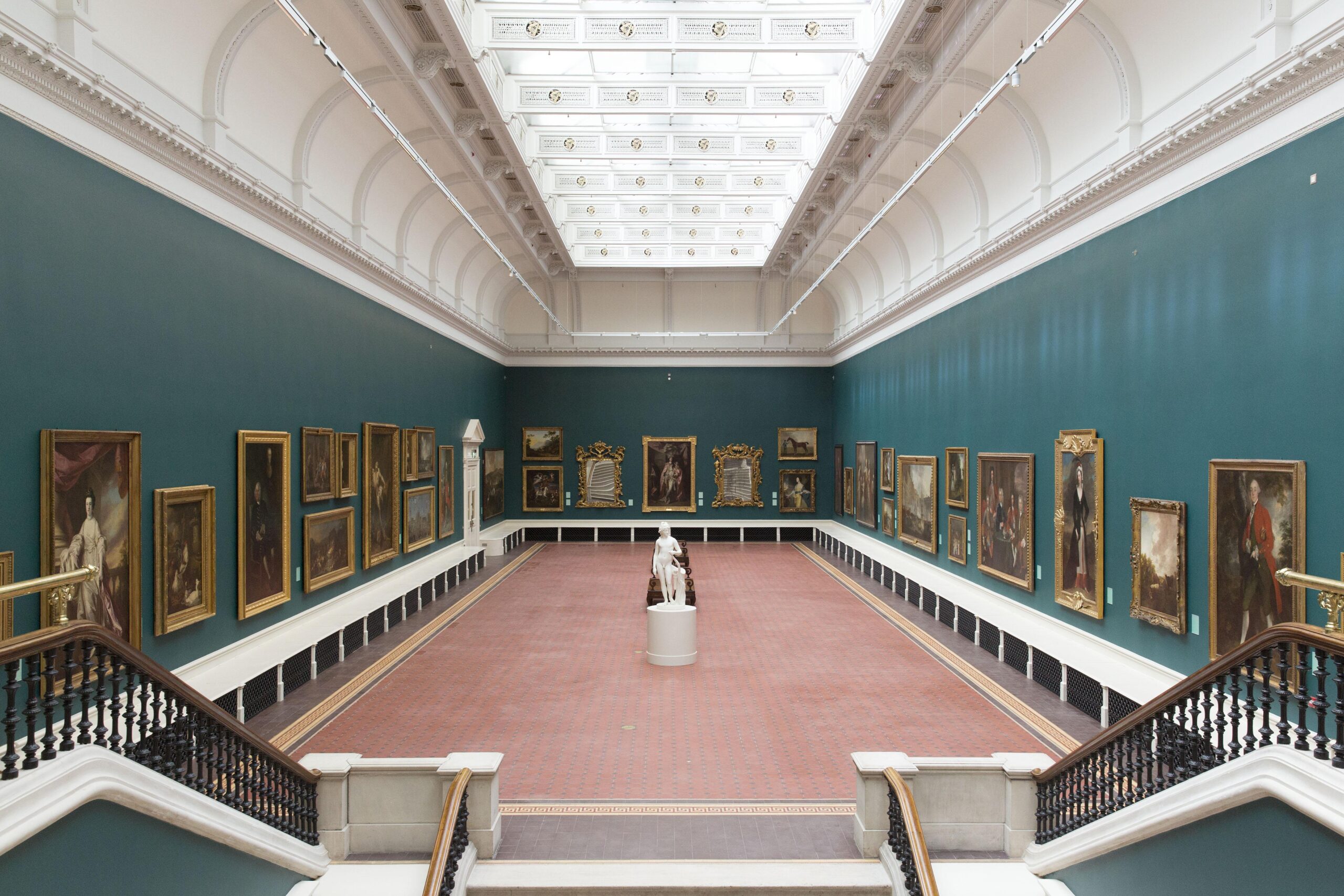
All of the artwork present in the gallery is spread across its four floors, consisting of a number of paintings, sculptures, illustrations, and photography pieces. From all the paintings the National Gallery of Ireland has in its collection, a painting that is seminal in its collection is titled The Marriage of Strongbow and Aoife (1854) by Daniel Maclise. The Marriage of Strongbow and Aoife is a depiction of the marriage at Waterford in 1170 of the Norman military adventurer Richard de Clare, known as Strongbow, and the daughter of Dermot McMurrough, King of Leinster. It is also a vague representation of the victorious Normans and the vanquished Irish (shown below).
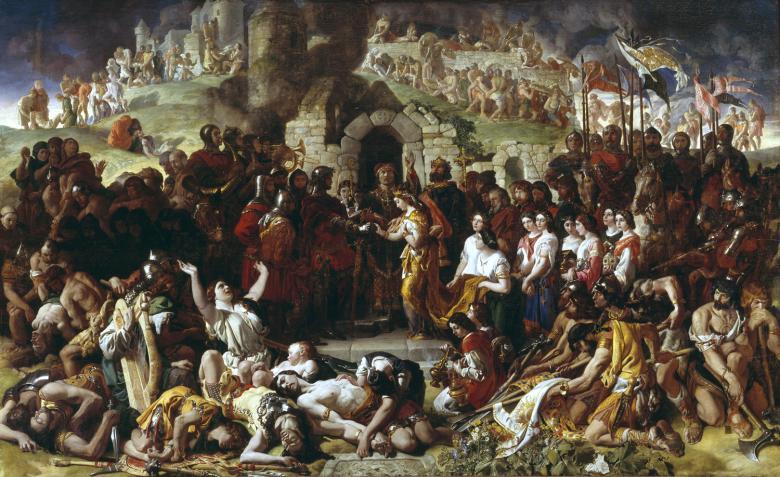
A standout example of one of its sculptures is of the Greek mythology figure Eurydice (1754) by Lawrence MacDonald (depicted below). The character of Eurydice is represented here as a marble sculpture posed as if she is drying herself off after bathing. Eurydice is also a part of the Greek myth of Eurydice and Orpheus telling the tale of their tragic marriage where she got a deadly snakebite that sent her to the Underworld. This left Orpheus to try bringing her back from the dead by trying to play music out of grief for his deceased wife.
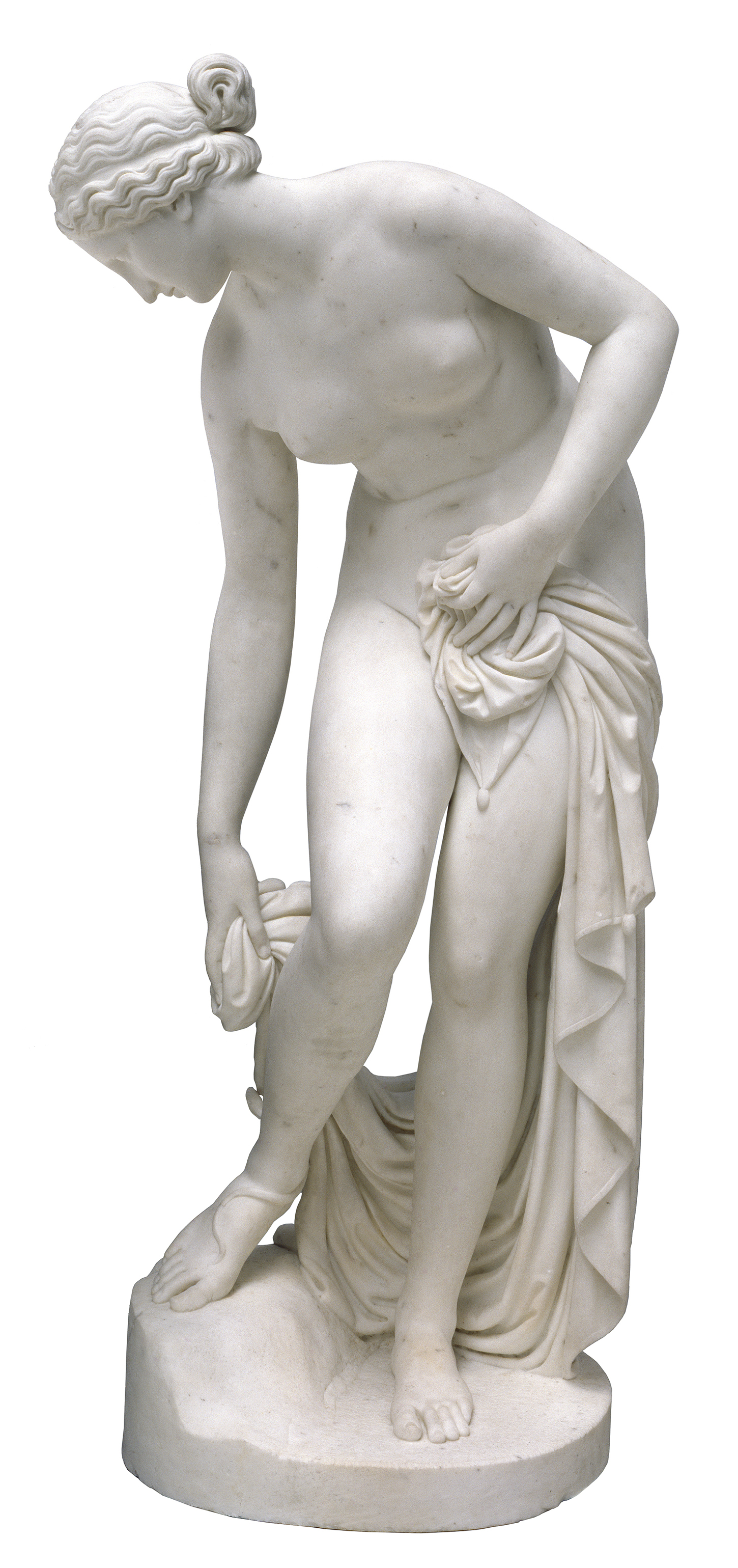
One illustration that the gallery has as an astounding addition in its collection is Athlone Castle, County Westmeath (1650s), which was attributed to Jan Peeters I. It is speculated that this illustration may be a copy by a Flemish artist of an initial sketch of the same castle. What this illustration depicts is a battle around that castle from the Siege of Athlone by Cromwell’s forces around the time the illustration was drawn. A number of people have had it in their ownership over time, including Prosper Henry Lankrink, a London collector who was originally a studio assistant to the 17th-century portraitist, Peter Lely.
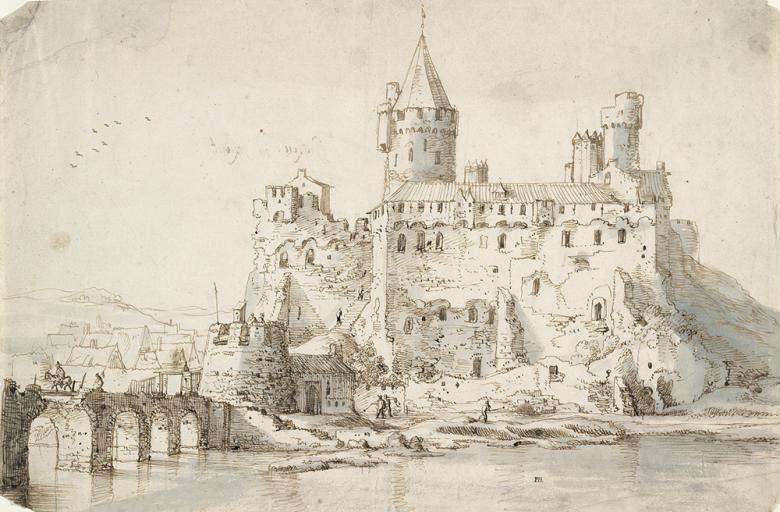
As for its photography pieces, the National Gallery of Ireland has one particular piece of note titled Dublin Night Scene (1964) by Erich Hartmann. This is a photograph inspired by his journey to Dublin in 1964, which was inspired by the works of James Joyce and Sean O’Casey. It is meant to show an atmospheric and vague glimpse into Dublin at night, with the main motif behind this and his other over 3000 photos of Dublin exploring “a vanished Dublin”. This “vanished Dublin” is in reference to what features used to be in Dublin and now aren’t, and the features of Dublin represented in the James Joyce novel Ulysses.
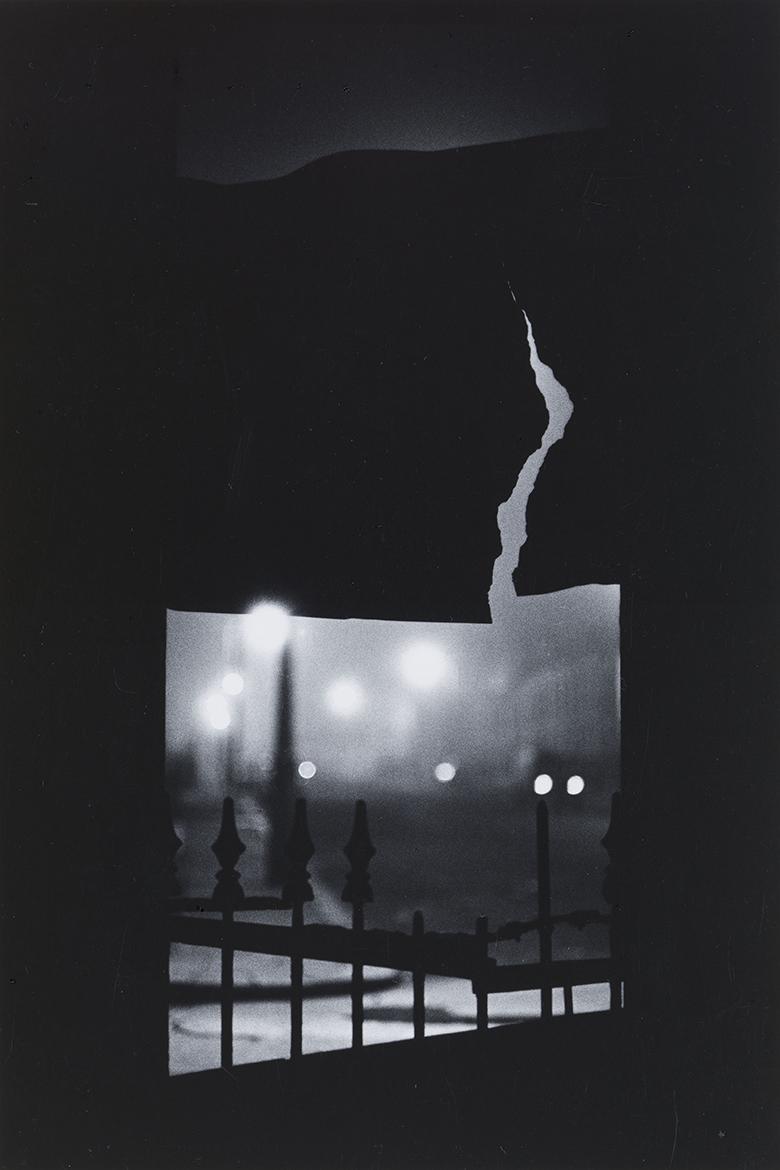
National Gallery of Ireland – Conclusions
With everything in consideration, the National Gallery of Ireland was set to indeed be an exhibition of excellence from its inception to present day. Its deep history, well-layered floors, and outstanding array of artworks of various mediums make this gallery a must-see for residents and travellers of Ireland alike. All you have to do is step in and experience the excellence of the National Gallery of Ireland for yourself.
Address: Merrion Square W, Dublin 2, D02 K303
Opening Hours:
Monday: 11am – 5:30pm
Tuesday – Wednesday: 9:15am – 5:30pm
Thursday: 9:15am – 20:30pm
Friday – Saturday: 9:15am – 5:30pm
Sunday: 11:00am – 5:30pm